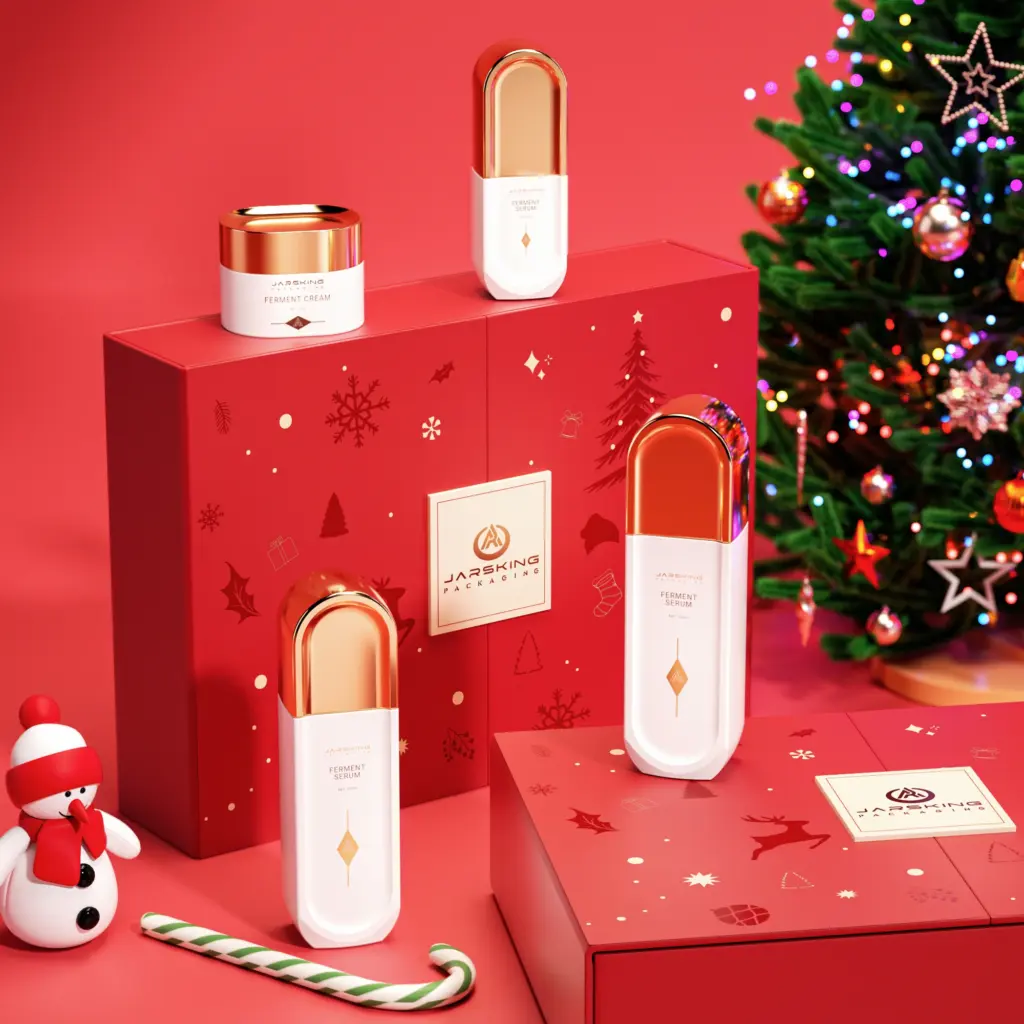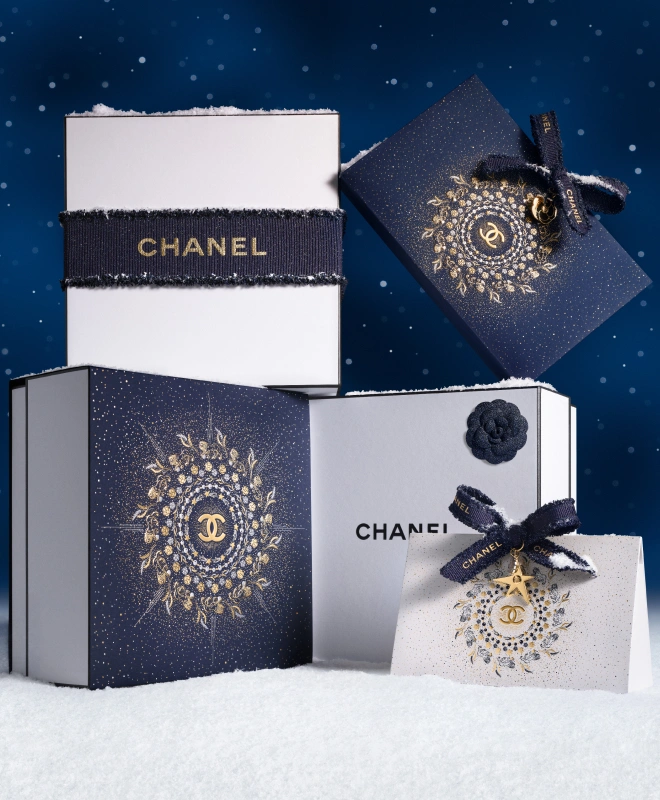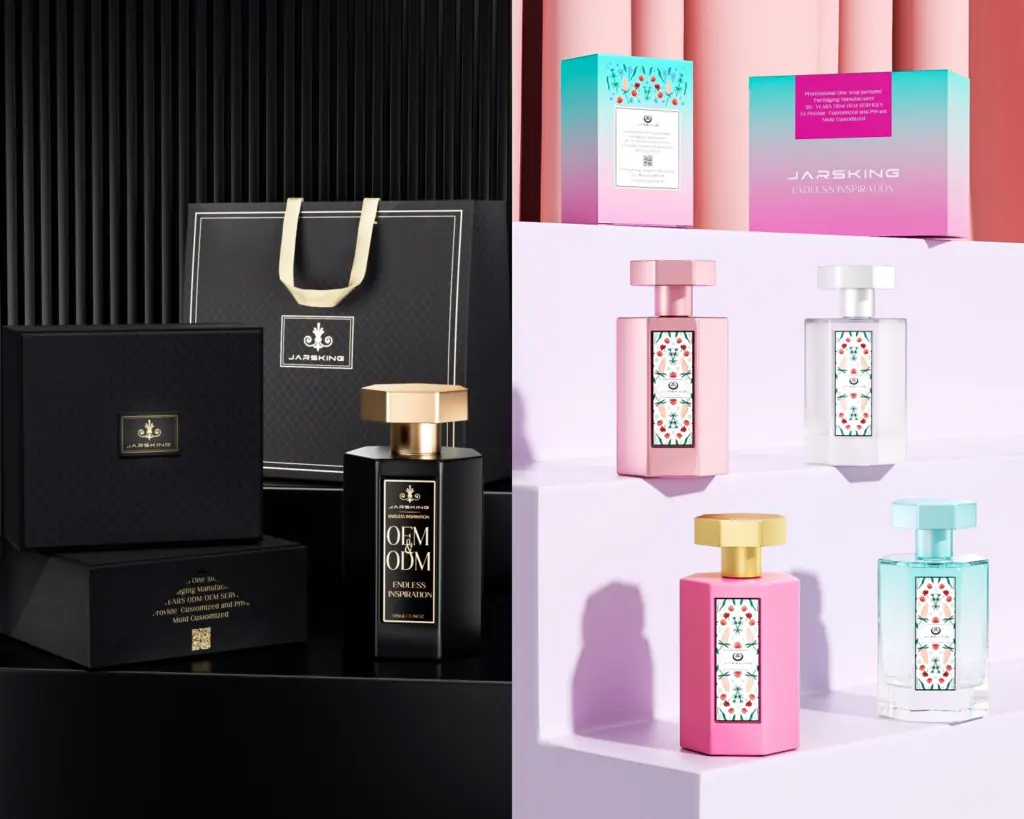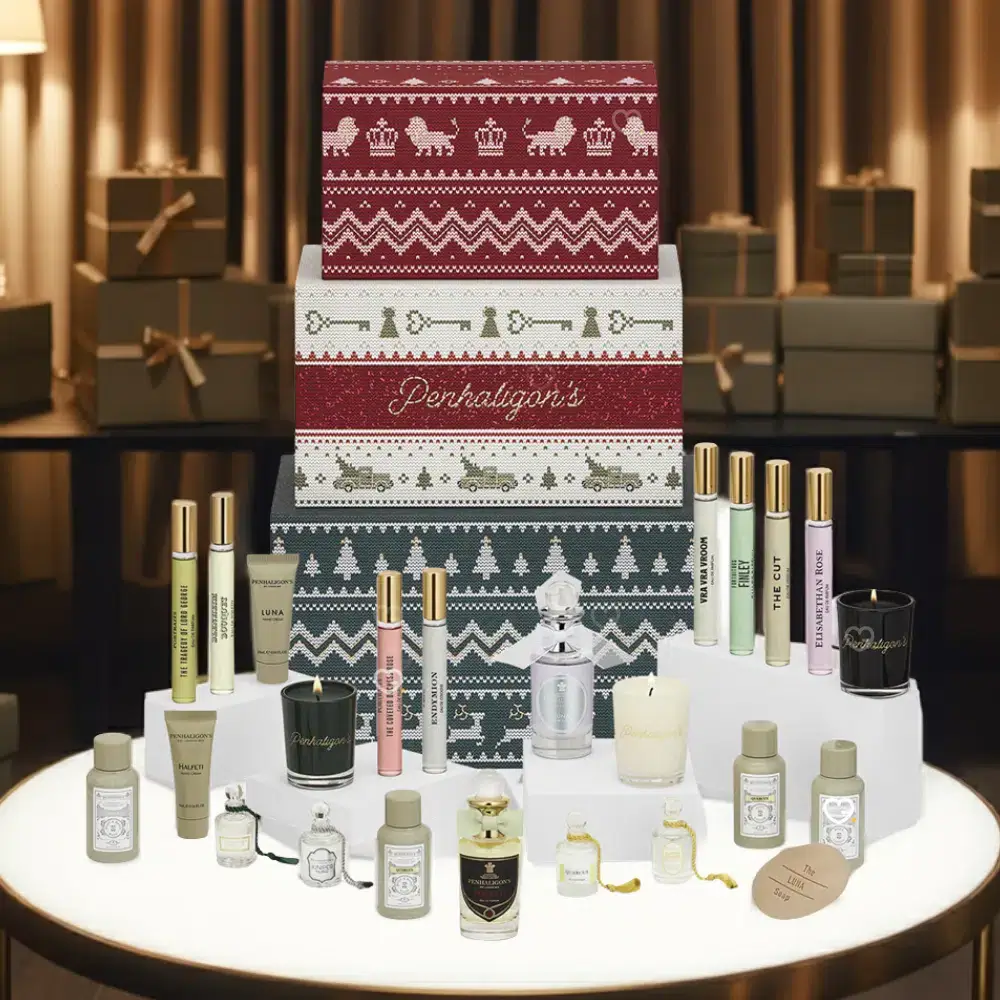The holiday season transforms perfume packaging from a mere vessel into a marketing powerhouse—unifying consumer delight, storytelling, and strategic brand performance. In 2025, “unboxing” isn’t just a digital meme; it’s the culmination of year-round design, supply chain, and marketing innovations, reflecting deep shifts in consumer values and business thinking. Leaders in fragrance and beauty understand that seasonal packaging is both art and business engine, blending sustainability, sensory mastery, aesthetics, and technology to deliver moments that linger in memory—and in bottom-line results.
This essay uncovers how the pivotal trends in holiday perfume packaging—eco-luxe materials, sensory experiences, unboxing theatrics, visual identity, and digital integration—are not isolated fashions but central drivers of sales, loyalty, and brand equity. By showing how these trends both shape and reflect strategy, this narrative provides a blueprint for brands determined to thrive at the intersection of design leadership and business performance.
Eco-Luxe Gifting: Sustainability as a Prestige and Profit Driver
Sustainability in luxury packaging is no longer a differentiator; it is an expectation embedded in how modern prestige brands communicate value. In 2025, the leaders of holiday retail are those that weave environmental responsibility into every layer of their gifting experience—without losing the emotional depth, beauty, or ceremony that luxury demands. Prestige is no longer defined by excess. It is defined by intention, craftsmanship, and the promise of long-term value.
Global maisons like Chanel and Dior have already shifted toward refillable perfume systems, transforming once-disposable formats into collectible, enduring pieces. Refillable shells crafted from lightweight glass, FSC-certified wood, or bio-based composites extend product life, reduce single-use plastics, and create a built-in reason for consumers to return. Many perfume houses now emphasize the recyclability of their components, the low-impact sourcing behind wooden caps, and the use of plant-derived inks—building a sustainability narrative that elevates rather than dilutes luxury.
Strategically, this “eco-luxe” direction carries weight far beyond aesthetics. It resonates with eco-conscious consumers seeking brands that align with their values, reassures investors who prioritize ESG performance, and answers to tightening global regulations. At the same time, circular design systems help brands navigate rising material costs, supply chain instability, and resource scarcity. Carbon labeling, transparent material disclosure, and responsible sourcing—once considered niche initiatives—have become standard expectations. Brands that move early not only secure reputational advantage but also build a more resilient, future-proof foundation for growth.

Tactile Temptation: Sensory Packaging and its Measurable Business Effects
“Touch value” has emerged as one of the most powerful yet often underestimated drivers of holiday perfume sales. Sensory packaging—whether through soft-touch coatings, velvet flocking, ribbed surfaces, or sculpted embossing—invites consumers into a physical dialogue with the product. These subtle tactile cues trigger anticipation, heighten the emotional weight of gifting, and elevate the perceived luxury of the item in hand. The richer the texture, the stronger the connection; and the stronger the connection, the more likely the product is to be photographed, shared, and recommended.
Evidence-based research shows a clear linkage between tactile experiences and higher “giftability”scores. People naturally handle textured boxes for longer periods, and this micro-interaction significantly boosts recall and affinity—two critical levers during competitive holiday shopping windows. Thoughtful details such as suede-lined trays, precision magnetic closures, layered paper stocks, or deeply debossed motifs operate as small but powerful proof points of craftsmanship. They turn a simple box into a keepsake, reinforcing value long after the unboxing moment.
From a business standpoint, sensory design directly contributes to stronger margins and higher average order values. Enhanced textures justify premium pricing, while also creating compelling upsell moments—deluxe gift wrapping, collectible limited-edition boxes, or seasonal accessories. Sensory differentiation protects prestige brands from mid-market erosion, as mass competitors struggle to replicate these multi-layered tactile effects. In retail environments, these packages act as literal “touch points,” increasing shelf dwell time, accelerating product discovery, and lifting conversion rates with measurable impact.
The Art of the Reveal: Unboxing as Story, Strategy, and Social Magnet
Holiday perfume packaging has evolved from a simple container into a choreographed experience—an unfolding narrative that heightens desire moment by moment. Today’s most successful luxury brands design multi-layered unboxing journeys with the precision of stage directors. Outer sleeves slide away to reveal textured inner walls; tissue paper opens like a whisper; custom ribbons, molded platforms, and printed messages work together to build suspense before the final reveal of the bottle. Each layer is a cue, each movement a chapter in a miniature gifting drama.
These unboxing rituals serve emotional and commercial objectives in equal measure. The slow crescendo of anticipation not only deepens the consumer’s personal connection with the gift but also fuels the engine of digital culture. Every tactile and visual element is deliberately shaped for social sharing—especially for bite-sized unboxing content on Instagram, TikTok, and Xiaohongshu. A single 10-second Reel showcasing delicate folds, magnetic closures, or shimmering sleeves can generate outsized reach, stimulate impulse gifting, and accelerate sell-through during peak season.
Brand Example: Chanel refined this art with its holiday limited editions, introducing a custom outer sleeve paired with a modular inner structure that guided the recipient’s reveal in distinctive steps. The package included a scannable QR code leading to a shareable augmented-reality moment, transforming a physical unboxing into a hybrid sensory-digital event. This seamless blend of craftsmanship and technology amplified buzz across social feeds, driving engagement on both retail floors and e-commerce platforms—and reaffirming the power of unboxing as a strategic tool for modern luxury.

Aesthetic Dualities: Minimalist Magic Versus Maximalist Merriment
The tension between minimalist and maximalist packaging isn’t simply an artistic preference—it is a deliberate business strategy that shapes brand identity, cultural relevance, and seasonal performance. Minimalist packaging, with its clean silhouettes, restrained palettes, and refined matte or metallic finishes, signals “quiet luxury.” It communicates confidence, timelessness, and a belief that the product itself is the hero. This style resonates with modern consumers who crave purity, clarity, and an effortless sense of sophistication.
Maximalist packaging, by contrast, embraces richness and abundance. Layered textures, ornate patterns, foiled accents, and festive illustrations transform a box into a celebratory object—evoking nostalgia, holiday wonder, and a sense of special occasion. These emotionally charged cues are particularly powerful during gifting season, when buyers look for designs that feel generous, expressive, and full of storytelling energy.
A key insight for 2025: the two worlds don’t have to compete. They can harmonize. Many brands now use minimalist outer shells to build intrigue, only to reveal an interior bursting with maximalist motifs—a duality that creates both aesthetic tension and a memorable “Instagram moment.” This contrast not only surprises the recipient but also amplifies digital shareability, capturing attention across social platforms where holiday buzz directly fuels sales.
Cultural geography is equally influential. Markets like the Middle East show a strong affinity for opulent patterns and narrative-driven visuals, while European and Japanese consumers may gravitate toward restrained elegance. Suppliers such as Jarsking have mastered the art of localizing global luxury cues, adapting minimalist or maximalist strategies to regional sensibilities without compromising brand DNA.
From a pricing perspective, visual aesthetics operate as economic signals. Minimalist packaging communicates premium positioning and modernity, supporting higher base prices and reinforcing brand authority. Maximalist designs, with their intricacy and craftsmanship, naturally align with limited editions—driving urgency, encouraging collector behavior, and lifting average transaction values during the competitive holiday peak.
Digital Integration: Blurring the Physical and Virtual
Packaging is rapidly transforming into an interactive gateway, and in 2025, holiday perfume brands are using technology not as an add-on but as a core storytelling device. QR codes, NFC tags, and embedded AR experiences are now woven directly into boxes and sleeves, turning packaging into a launchpad for digital discovery. These touchpoints unlock personalized holiday greetings, limited-edition perks, behind-the-scenes content, or immersive micro-stories that extend the spirit of the festive campaign far beyond the product itself.
This seamless interplay between physical and digital delivers powerful dual benefits. First, it lengthens the brand journey long after the purchase moment, offering consumers richer interactions while giving brands first-party data—an increasingly valuable currency in a privacy-conscious world. Second, it activates loyalty programs, facilitates feedback loops, and powers viral sharing mechanics. A simple scan can turn a recipient into an advocate, guiding them from unboxing to community participation in a matter of seconds.
From a business perspective, digital integration elevates packaging into a strategic asset. Brands gain deeper engagement metrics, more precise retargeting pathways, and a clearer line of sight from holiday creative campaigns to conversion, repurchase, and long-term loyalty cycles. In an omnichannel landscape where physical shelves and digital feeds compete for attention, packaging becomes a bridge—equally influential in-store, online, and everywhere the customer chooses to engage.

Strategic Tactics: Turning Trends Into Measurable Impact
Seasonal packaging has become the engine behind some of the most profitable limited editions and holiday gift sets. More than a fresh design, these launches function as retail events—complete with embossed caps, themed sleeves, collectible interiors, and staged unboxing moments that spark anticipation. Scarcity tactics amplify this momentum. Serialized boxes, influencer-exclusive pre-releases, and timed digital unlocks create controlled urgency and activate the powerful psychology of FOMO, accelerating early sell-through and pushing reach far beyond the brand’s core audience.
Gift sets remain one of the strongest vehicles for holiday upsell. With thoughtfully engineered multi-product layouts—luxurious yet sustainable—they encourage both gifting and self-treating behaviors. Modular inserts, custom foams, and secure magnetic closures simplify e-commerce fulfillment while elevating the perceived value of the set. Brands consistently see higher average order values and expanded cart size when seasonal packaging is optimized as a premium gifting solution.
But the true differentiator is measurement. High-performance teams track a holistic suite of KPIs: social reach from unboxing content, participation in interactive experiences, refillable repeat-purchase rates, conversion lifts tied to packaging updates, and reductions in returns due to improved protective structures. These insights shape future creative choices and supply chain decisions, ensuring that design is not just beautiful but also profitable. The most effective brands operate cross-functionally—uniting creative, product, logistics, and digital marketing—to ensure every layer of holiday packaging contributes directly to measurable growth.
Globalization and Localization in Packaging Strategy
Global luxury brands today operate in a landscape where cultural nuance and global consistency must coexist. Packaging is the frontline of this balance. A brand must project a unified, aspirational identity worldwide—yet still speak fluently to regional aesthetics, traditions, and emotional cues. In the Middle East, ornate designs, gilded accents, and story-rich motifs resonate with consumers who value opulence and narrative depth. In Scandinavia or Japan, however, restraint, clarity, and minimalist elegance often embody the ideal expression of premium sophistication.
This duality requires both sensitivity and precision. Suppliers with expansive global reach and localized insight—such as Jarsking —are equipped to meet this challenge. By combining an international manufacturing ecosystem with deep regional market knowledge, they deliver culturally attuned design solutions without compromising speed, sustainability benchmarks, or structural performance. The result is packaging that feels authentically local yet unmistakably consistent with the brand’s global DNA.
Modern brand managers are formalizing this balance through “glocal” KPIs—frameworks that measure cultural resonance alongside operational efficiency. These indicators assess everything from regional color preferences and gifting rituals to the performance of standardized materials, refill systems, and embedded digital touchpoints. The winning strategy is one where variation enhances connection, and global standards ensure reliability, sustainability, and cohesive brand storytelling across every market touched during the holiday season.

Iconic Christmas Case Studies and Their Design Lessons
Jo Malone London: Layered Festivity and Unforgettable Unboxing
Jo Malone’s holiday gift sets are celebrated industry-wide, not just for their high-quality scents, but for their innovative packaging. Each year, Jo Malone crafts a distinct holiday narrative—recently using bold patterns, “jazzy knits,” and a mix of minimalist exteriors with joyful, vintage-inspired interiors. Their boxes pair tactile details, such as custom ribbons and gold-foil accents, with interactive experiences like pop-up cards or QR codes linking to exclusive music playlists. This multi-sensory approach turns unboxing into a memorable ritual, encouraging customers to share their experiences online. The result: increased organic reach, earned media, and heightened purchase intent during the Christmas rush.
Guerlain and the Art of the Perfume Advent Calendar
Guerlain’s Advent calendars are striking examples of how packaging can extend engagement, not just instant gratification. Their 25-drawer storybook boxes house both full-size perfumes and minis, hidden among holiday-themed drawers and decorative art. The emphasis on reusability—many customers keep the boxes as part of their holiday decor—enhances the sustainability story and makes the package itself a long-lasting treasure, not just a seasonal wrapper. By housing skincare and scent, Guerlain also leverages cross-category upselling within one package, maximizing average order value while delivering delight for 25 days.
Penhaligon’s: Heritage Reimagined for Seasonal Magic
Known for its whimsical, apothecary-inspired bottles, Penhaligon’s Christmas collections often feature themed tins or gift boxes wrapped in playful, collectible designs. Featuring a curated mix of scents that evoke classic British holiday nostalgia (such as rum, vanilla, and ginger), Penhaligon’s ties its packaging to both brand heritage and festive mood. Custom illustrations, ribbons, and metal containers encourage gifting and create keepsakes, with the packaging often outlasting the product—and generating ongoing brand touchpoints in customer homes.
Key Takeaways for 2025 and Beyond
• Purposeful Layering Enhances the Unboxing Journey
Multi-part packaging—such as sleeves, trays, and nested compartments—adds to the drama of holiday gifting. The excitement of discovery and anticipation creates a shareable, giftable moment, which in the age of social media, results in major word-of-mouth amplification.
• Limited Editions and Collectibles Drive Urgency
Offering exclusive finishes, serialized bottles, or artist-collaborated illustrations turns fragrances into collectibles. The promise of a “one-time only” gift, complete with special packaging and accessories, spurs faster purchase decisions, higher gift box AOV, and resale interest.
• Gift Set and Advent Calendar Engineering Boosts Value and Loyalty
The best-performing launches cross merchandise categories—combining fragrance, body care, and exclusive holiday products into one set or calendar, raising overall spending per customer.
• Sustainability and Keepsake Appeal Are Table Stakes
From refill containers to reusable advent boxes, luxury brands are showing that “eco” and “deluxe” are fully compatible. The packaging is viewed as a gift itself, often retained for years, amplifying both sustainable value and brand presence in customers’ daily lives.
• Digital and Sensory Integration Create Lasting Impact
Elemental features such as QR codes, custom playlists, holiday-themed AR, or exclusive content unlock elevated engagement. Tactile details (soft-touch finishes, velvet inserts) and sense-driven add-ons (holiday scents, sounds, and visuals) turn the box into a holistic experience, not just a vessel.
Implications for Packaging Design in 2025 and Beyond
• Hyper-Personalization: Brands should use data, digital touchpoints, and modular kits to tailor gift experiences—offering customizable names, gift messages, or product combinations in real time.
• Circularity and Refill Innovation: Expect more kits to highlight reusable or refillable elements—refill pods inside premium holiday sleeves, return-to-store incentives, and refit-made easy by smart interior fittings.
• Expandable Keepables: Turn outer boxes, tins, or calendars into storage, ornaments, or home decor, ensuring packaging outlasts the gifting season.
• Emotional Storytelling: Leverage heritage, visuals, and narratives linked to home, memory, or celebration to deepen brand connection.
• Augmented Reality and Immersion: Future-forward brands will enable digital layering—recipes, soundscapes, and interactive unboxings—accessible by scanning packaging, building communities around the seasonal launch.
These lessons show that the most successful Christmas perfume packaging is not just about beauty or luxury; it’s about crafting emotional, memorable, and multi-functional experiences that carry value long after the holidays, paving the way for more thoughtful, engaging, and sustainable designs in seasons to come.

Evolving Sustainability: Cost-Conscious Strategies for Holiday Packaging
Sustainable holiday packaging in 2025 is no longer framed as a cost trade-off. Forward-thinking perfume brands now view it as a pathway to operational efficiency, long-term profitability, and elevated brand equity. Instead of treating “green” as an added expense, the industry is integrating sustainability into every layer of design, sourcing, and production—proving that responsible choices can also be financially savvy.
• Material Optimization
Lightweight glass structures, reduced resin usage, and higher PCR content—now commonly reaching 40%—allow brands to cut raw material costs while lowering shipping weights. These optimizations have become standard, offering both environmental wins and measurable savings.
• Local and Recycled Sourcing
Sourcing FSC-certified papers, recycled pulp, and biodegradable caps from local or regional suppliers shortens lead times, reduces freight costs, and minimizes carbon footprints. The shift supports agility during the holiday rush while reinforcing eco-driven consumer expectations.
• Simplified, Modern Design
Minimalist, mono-material packaging trims unnecessary layers and simplifies assembly. Digital printing replaces complex finishes, shrinking production cycles and reducing waste. The aesthetic remains elevated, but the structure becomes far more cost-efficient.
• Refill and Reuse Business Models
Although initial investments in refillable systems may be higher, the long-term economic payoff is undeniable. Refillable shells reduce ongoing production volume, extend customer lifetime value, and align perfectly with sustainability KPIs—making them a smart, margin-friendly strategy for holiday collections.
• Innovative Biodegradable Materials
Mushroom-molded inserts, bioplastic vials, and upcycled papers have reached cost parity at scale. These materials enhance environmental credentials without compromising luxury cues, helping brands meet both regulatory expectations and consumer demand.
• Supplier Collaboration
Partnerships with sustainability-forward manufacturers—such as Verescence for recycled glass—give brands access to optimized substrates, flexible design options, and easier compliance with global environmental standards. Supplier alignment has become a critical driver of cost and performance efficiency.
• Streamlined Production and Logistics
Renewable energy sourcing, lightweight components, and simplified pack structures reduce energy consumption across the supply chain. LCA studies show that when fully implemented, these strategies can achieve up to 60% reductions in both packaging cost and environmental impact.
• Transparent Consumer Messaging
Clear communication around recycled content, refill systems, or simplified design elevates perceived value and strengthens trust—often reducing the need for heavy promotional budgets. Sustainability itself becomes part of the luxury narrative.
• Industry Example
Leading houses such as Chanel, Guerlain, and YSL continue to prove that refined, eco-forward holiday packaging can achieve cost neutrality—or even cost savings—while maintaining impeccable luxury standards.
Integrated sustainability is now the connective tissue of the most successful holiday fragrance projects. It delivers real environmental progress, sharpens operational efficiency, and reinforces both brand equity and bottom-line performance.

The Future of Holiday Perfume Packaging: From Cost Center to Growth Catalyst
Holiday packaging is no longer a passive expense—it has become a strategic engine for revenue, brand equity, and competitive differentiation. When brands merge eco-luxe aesthetics with sensory impact, layered storytelling, distinctive shelf presence, and digital interactivity, the result is more than seasonal charm: it drives measurable boosts in conversions, retention, and earned-media value.
For brand managers, designers, and creative directors, the mandate ahead is deeply cross-functional. Packaging now sits at the intersection of R&D, operations, digital marketing, and social content teams, forming a continuous feedback loop where each campaign informs the next. The most successful brands set clear packaging KPIs—tracking carbon output, supply-chain efficiency, social engagement, refill adoption, and upsell performance—to ensure every launch delivers beyond aesthetics.
Looking ahead, expect packaging to be woven even closer into product innovation itself. Circular systems, modular and refillable structures, hyper-personalized digital layers, and regionally adaptive narratives will shape the next era of holiday fragrance design. What emerges is a model where packaging isn’t just wrapping—it is a growth catalyst guiding year-round brand momentum and long-term market leadership.
Conclusion
In 2025, holiday perfume packaging embodies a new era of strategic integration, where every design choice blends aesthetic impact, sustainability, and consumer experience—all as levers for growth. Industry data shows that the global market for fragrance packaging has surpassed $14 billion, with consumer demand for refillable, recyclable, and story-driven packaging at an all-time high. The most successful brands make unboxing a data-informed pillar of their product launches, combining tactile luxury with emotional resonance and digital features that amplify seasonal engagement and foster lasting loyalty.
Looking forward, the future belongs to those who view packaging as both an art form and a driver of business impact. By mastering eco-friendly innovation, layering design, and immersive experience—while remaining agile to shifts in regulation and consumer values—brands turn each holiday release into a cornerstone for year-round relevance and commercial success. In this landscape, the box is never just a box: it’s a stage-managed, sharable promise that continues to deliver value—long after the holiday rush fades.
